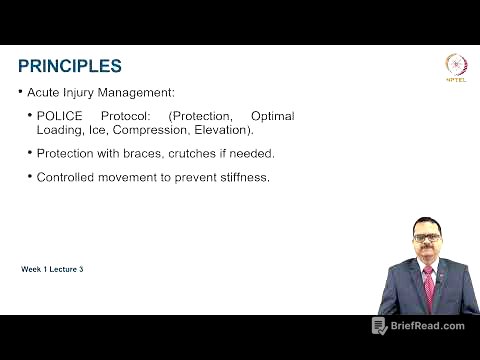TLDR;
This video features a discussion with Jae-eun Shin, CEO of The Barun Company and author of "The Power of Silicon Valley Process," about the differences in work culture and processes between Korean and Silicon Valley companies. Shin shares her career journey, highlighting her transitions between various industries to stay current with emerging trends, and emphasizes the importance of customer-centricity and structured work management. The conversation covers the unique aspects of Amazon's work culture, including the use of 6-page documents for meetings and the Agile business meeting method, and offers advice for office workers on making the most of their time and careers.
- Career changes driven by the need to learn and adapt to new trends.
- Customer-centricity as a core principle in Silicon Valley companies like Amazon.
- Structured work processes and clear ownership to prevent problems and improve efficiency.
Introduction [0:00]
The host introduces Jae-eun Shin, CEO of The Barun Company and author of "The Power of Silicon Valley Process." Shin's company designs Silicon Valley-style work systems for domestic Korean companies. The discussion aims to explore the differences between work cultures in Silicon Valley and Korea, focusing on work distribution and management.
Career Journey and Adaptability [0:48]
Shin explains her frequent job changes as a deliberate effort to acquire new skills and knowledge in line with emerging trends, such as finance, fintech, digital transformation, and Silicon Valley practices. She emphasizes the importance of understanding what skills are needed to stay relevant and how to present oneself as an attractive candidate to potential employers by aligning one's experience with the company's needs. She shares an example of how she got a job at Amazon by highlighting her entrepreneurial experience and problem-solving skills, which matched the desired traits in the job description.
Transitioning Between Industries and Starting a Business [4:01]
Shin discusses her decision to leave a stable job in finance to start a fintech business, driven by a desire to experience entrepreneurship and make an impact. Despite the failure of the business, she views it as a valuable learning experience that broadened her perspective and taught her the importance of collaboration and perseverance. She reflects on the challenges of pushing initiatives forward and the need to learn from failures.
Experiences at Hyundai Card: A Korean Company [5:43]
Shin shares her positive experience working at Hyundai Card, where she was given considerable autonomy and support to promote innovative projects, such as the first overseas remittance business among domestic card companies. She describes how she leveraged her network to establish partnerships with Shinhan Bank and a British fintech company, Currency Cloud, and successfully navigated regulatory hurdles by engaging with the Ministry of Strategy and Finance. She emphasizes that if she really wanted to push forward, they would support her with an open mind.
Amazon's Customer-Centric Organizational Culture [7:48]
Shin highlights Amazon's strong customer-centric organizational culture, where all business requests are based on the premise of benefiting the customer. She mentions the "Voice of the Customer" program, where customer feedback is actively solicited and used to drive improvements. Amazon's leadership principles, particularly the emphasis on customer obsession, reinforce this culture, influencing employees to prioritize customer needs in their work.
Practicing Customer-Centricity and Problem-Solving [8:44]
Shin describes the characteristics of customer-centric individuals, emphasizing their excellent problem-solving skills and their commitment to addressing the root causes of issues rather than just providing quick fixes. She notes that these individuals aim to eliminate problems entirely to prevent future inconvenience for customers.
The 6-Page Document Meeting Process at Amazon [9:20]
Shin explains Amazon's unique meeting process, which involves writing and reading 6-page documents. All meeting participants, including decision-makers, read the document together at the start of the meeting to ensure everyone has the same level of understanding. The discussion then focuses on clarifying ambiguities, addressing contradictions, and seeking additional explanations within the document. This process fosters critical and objective thinking, as well as logical reasoning, among practitioners.
Adult Culture and Constructive Feedback [10:50]
Shin emphasizes Amazon's "adult culture," where employees are expected to accept and provide constructive feedback without taking it personally. She notes that this culture may be challenging to implement in Korean companies without sufficient maturity and self-esteem among employees. Shin shares her approach to teaching domestic companies how to provide feedback effectively, focusing on specific and clear communication to avoid misunderstandings.
Agile Business Meeting Method [12:15]
Shin introduces the Agile business meeting method, which focuses on setting clear business objectives, creating action plans, and proactively managing execution to prevent problems. This approach aims to shift the focus from reacting to problems after they arise to anticipating and mitigating them in advance. She notes that this method is widely used in Silicon Valley companies and encourages Korean companies to adopt it for more efficient organizational management.
Ownership and Accountability in Work Management [13:30]
Shin addresses concerns about the potential for employees to pass on work or avoid responsibility, emphasizing that the work management template includes a clear definition of ownership. She contrasts this with the Korean work culture, where tasks are often divided into small, disconnected pieces, making it difficult for individuals to take full ownership and responsibility. She advocates for a company culture that clearly defines roles and responsibilities to promote accountability.
Target Audience and Recommendations for Office Workers [15:59]
Shin shares that she initially wrote her book for corporate executives, hoping to inspire them to adopt Silicon Valley work processes for greater efficiency. However, she has also received positive feedback from field-level employees and product team leaders. She recommends the book to prospective entrepreneurs, emphasizing the importance of both vision and operational excellence. For office workers, she advises reflecting on the value of their time and using it for learning, personal growth, or taking necessary breaks to maintain well-being.









